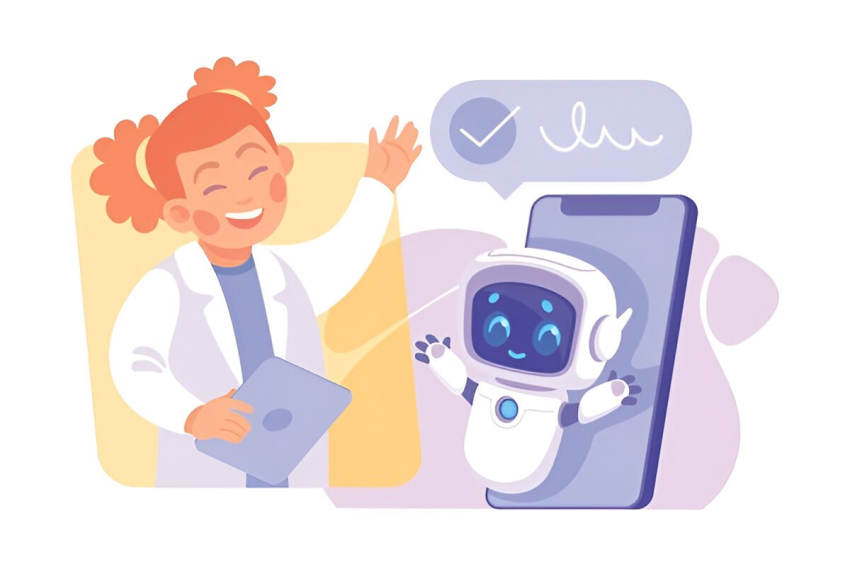User interaction is important to developing successful Android apps in the age of highly customized digital experiences. Today’s users anticipate that apps will not only complete jobs quickly but also understand their preferences, adjust to their activities, and offer smooth, user-friendly interactions.
Presenting Artificial Intelligence (AI), a revolutionary technology that allows developers to create Android user experiences that are rare. It’s now easier to design dynamic features like voice assistants, intelligent suggestions, and predictive typing that transform user interaction with mobile apps with the growth of GenAI development services.
We’ll look at how to successfully incorporate AI into Android apps in this post to increase user interaction.
How does AI improve the way users interact with Android apps?
AI significantly improves user interaction by bringing intelligence, customisation, and predictive behavior to mobile apps. Here’s how:
Personalized Experiences
AI uses user behavior analysis to provide navigation, product recommendations, and personalized content. This is how apps like Spotify and Netflix customize suggestions for every user.
Smart Navigation and Input
Voice input, autocomplete, and predictive typing all help users finish activities more quickly and with less effort.
Intelligent Notifications
AI enhances click-through rates and engagement by enabling apps to deliver relevant push notifications according to user behavior, location, or preferences.
Conversational Interfaces
Conversational experiences are produced by chatbots and voice assistants, assisting users with onboarding, or respond to FAQs.
Visual Intelligence
Features like picture identification, facial recognition, and augmented reality (AR) are added by computer vision, allowing for more natural and engaging user interaction.
What kind of AI tools can I add to enhance UX in Android apps?
You can incorporate several AI tools and platforms to improve user interaction, depending on the objectives of your app:
Google ML Kit
- Perfect for machine learning on-device.
- Supports barcode scanning, translation, word recognition, facial identification, and more.
TensorFlow Lite
- A lightweight Android version of TensorFlow.
- Excellent for creating and implementing personalized machine learning models on mobile devices.
Dialogflow
- Helps in the development of natural language chatbots & voice interfaces.
- Can be linked to in-app chat or Google Assistant.
Firebase Predictions
- Uses ML to analyze user behavior and predict actions like churn or conversion.
- Helps automate personalized messaging.
OpenCV for Android
- An effective tool for putting computer vision features like gesture detection, picture filters, and augmented reality into practice.
To create a more intelligent, responsive, and customized app experience, these tools can be used separately or in combination.
How can I add AI features in my Android app to boost interaction?
It doesn’t have to be difficult to incorporate AI into your Android app. Here’s a best strategy to get going:
Identify Key Interaction Points
Examine the current user experience of your app first. Where are users dropped off? Which characteristics are most popular? Use AI to improve these areas by introducing chatbot support, smart search, or predictive content.
Choose the Right AI Tool
Choose a tool or SDK depending on the feature you wish to implement. For simple image labeling or face identification, use Firebase ML Kit; for more complex, custom ML models, use TensorFlow Lite.
Implement Lightweight Models for On-Device AI
You can guarantee improved performance and protect user privacy by using AI models on the device. Both ML Kit and TensorFlow Lite are customized for Android smartphones.
Train or Use Pretrained Models
You can use pre-trained models for tasks like object detection or sentiment analysis. Use user data to train a custom model if your use case is more specialized (e.g., identifying gestures exclusive to your app).
Test and Iterate Based on User Feedback
Track the impact of AI features on user behavior. Are they enhancing communication or creating misunderstandings? A/B testing and analytics can be used to continuously improve them.
Challenges and Considerations
Even if AI has numerous benefits, it must be used carefully:
- Data privacy: Make sure user information is managed openly and safely.
- Performance and Battery: AI models may use resources; performance should be optimized.
- AI bias: Results from models trained on biased data may be twisted. Audit your data and outputs on a regular basis.
- Over-engineering: AI is not required for every functionality. When it truly brings value, use it.
Conclusion
AI is reinventing user interaction, not just improving it. AI gives Android app developers the means to go beyond static designs and produce real-time learning, adapting, and responding experiences. AI can increase your app’s usability and stickiness, whether it’s through predictive models for better navigation or generative AI development for customized content generation.
Are you prepared to create popular AI-powered Android apps? Collaborate with knowledgeable Android developers who know how to strike a balance between usability and innovation.
